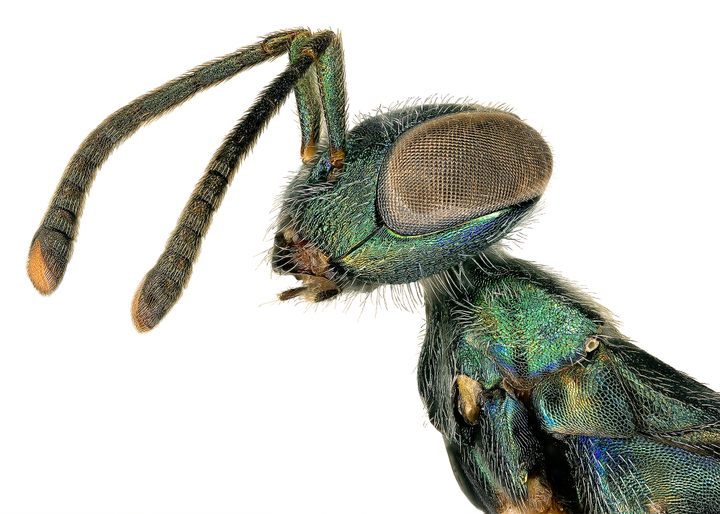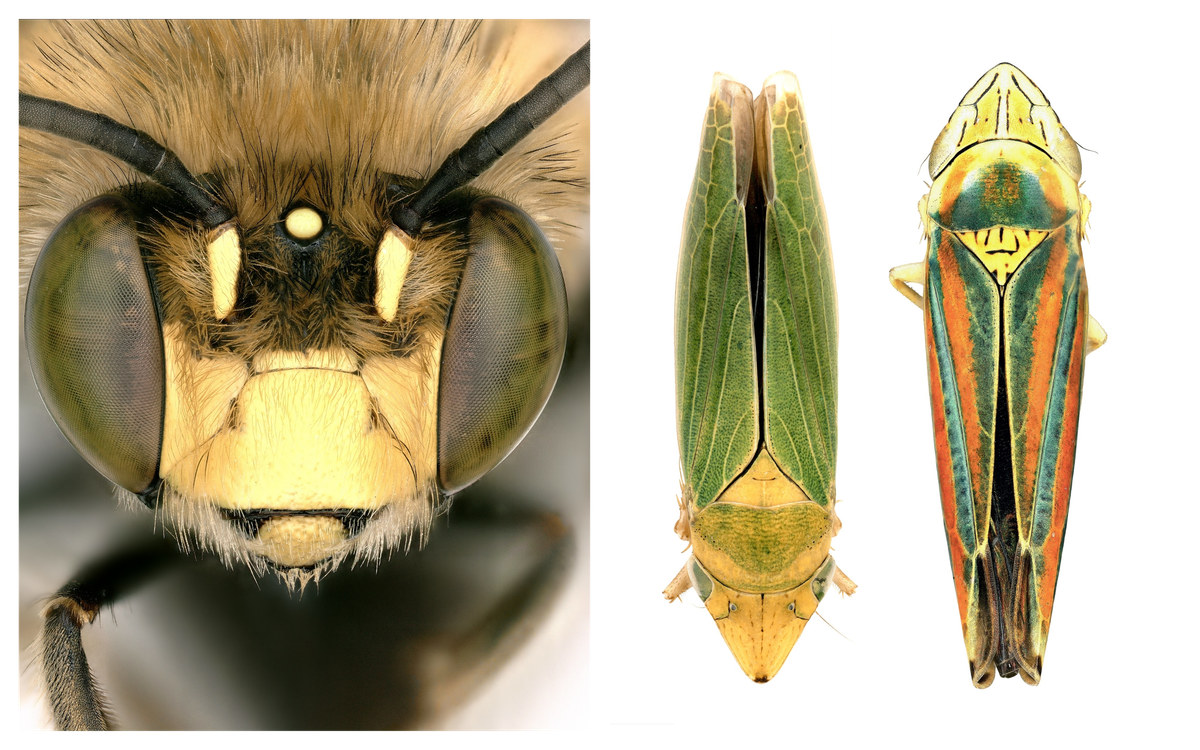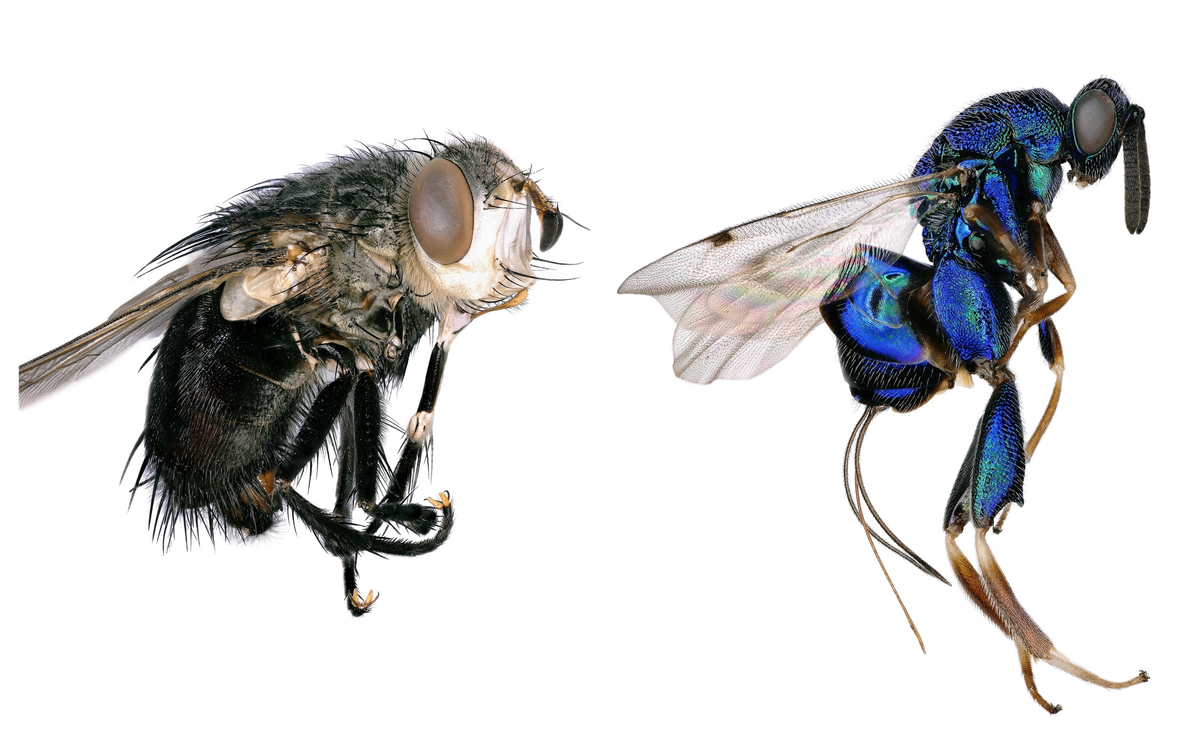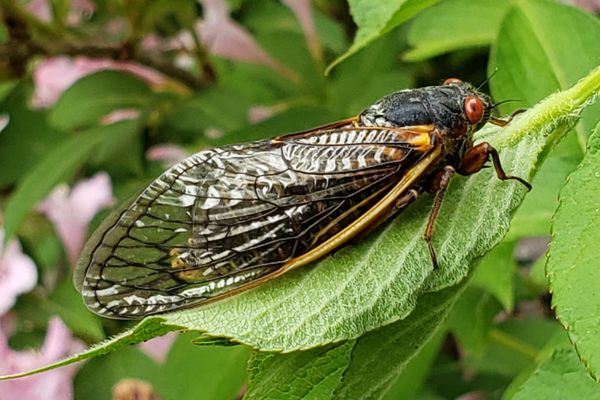
L.A.’s Insects Are Hairy, Iridescent, and Crazy Photogenic
The creatures are ready for their close-ups—in the name of getting a better handle on biodiversity in the bustling city.
Lisa Gonzalez is the kind of photographer who knows how to make her subjects look good. It involves a bit of fussing and preening, maybe some artful arranging of limbs. When her sitters look a little shriveled, she rehydrates them; when they’re unkempt, she grooms them. Gonzalez’s task is complicated by the fact that some of her subjects are smaller than a grain of rice. Sometimes she has to use a brush with a single bristle.
Gonzalez is an assistant collections manager of entomology at the Natural History Museum of Los Angeles, and a member of the team that is inventorying the insect population of the Los Angeles Basin, then viewing and photographing them under high magnification. In this era of social distancing, the museum has debuted a digital exhibition, Spiky, Hairy, Shiny: Insects of L.A., which introduces Angelenos to some of their small, winged neighbors in nearly surreal detail.

The museum has been conducting this census for several years as part of its BioSCAN project, which is investigating the biodiversity of the second-largest city in the United States. Historically, entomologists have flocked to forests or meadows, skipping sidewalks or apartment buildings, but this research team believes it’s crucial to compile baseline data about what’s living in the city, too. So far, the project team has identified 800 insect species, 47 of which had never been recorded before.
The beetles, flies, and other creatures that eventually wound up beneath Gonzalez’s microscope had no inkling of what was in store for them when they unwittingly entered what are known as Malaise traps—tent-like structures with a hole at the top. There’s no bait inside. Instead, insects gravitate in and up toward the light, and then tumble into a bottle containing alcohol. Researchers retrieved the samples, brought them back to the museum, added fresh ethanol, and enlisted volunteers and work-study students to help sort the specimens, using forceps or pipettes to group flies in one jar, for instance, and butterflies in another. They caught so many that would it would be impossible to study them all.

The museum’s experts (and colleagues at other institutions) swooped in to sort the insects further, hopefully zeroing in to the species level, either by sight or molecular analysis. It’s a tricky task to parse itty bitty morphological markers that differentiate one species from another (say, the shape of male genitalia or tiny bristles on the body). There may also be considerable variation within a single species, Gonzalez adds. That’s where genetic analysis can come in handy. “Sequencing them is basically dead easy,” says Brian Brown, curator of entomology at the museum and leader of the project. “It’s just chemistry.” Lastly, Gonzalez and company photographed them with a Keyence microscope. “This system was originally designed to inspect semiconductors,” Brown says. “We decided to start using it for insect photography because it produces such high-resolution images.”
Over the several phases of the project, the BioSCAN team has installed 80 of their traps in various backyard settings—from dense to more wide-open—across the Los Angeles Basin. The team noticed that patterns emerge in terms of which insects show up where. Flower-feeders, such as bees and butterflies, tend to wander far and wide in pursuit of an appealing bloom, while some very teeny flies seem to stay much more local, in particular pockets. Overall, Brown says, the team found that biodiversity is correlated with drier conditions. “We tell people, ‘If you want to increase biodiversity in L.A., lighten up on water,’” he says.

Some of the insects they’ve collected are longtime residents of the city—leafcutter bees, for instance, have prehistoric bonafides; fossilized family members were entombed in the La Brea tar pits tens of thousands of years ago. Other species’ persistence depends on where their fellow residents have or haven’t been squeezed out. The eucharitid wasp, which looks like an onyx-colored reindeer with shiny crocodile skin, can only thrive where native carpenter ants hold on. (In the winter, female wasps drop their eggs on rhododendron and willow buds, and foraging ants later carry the larvae along.) “In Los Angeles, most native ants have been outcompeted by Argentine ants, so most of those wasps are relegated to the periphery of the city,” Brown says. The mantisfly, which has eyes like creamy pearls, was also among the least common in their samples. The team only collected one.
The portraits feel a little glamorous, partly because the details leap out of the images. Some look furry as a golden retriever puppy, and others seem to be decked out in patent leather or velour. The images are a reminder to anyone wandering Los Angeles that the sky and ground are teeming with little bits of wonder, and that their backyards may be full of creatures that aren’t yet known to science. “People potentially have new species living in their neighborhoods,” Gonzalez says. And if these insects are any indication, they might be pretty photogenic.

















Follow us on Twitter to get the latest on the world's hidden wonders.
Like us on Facebook to get the latest on the world's hidden wonders.
Follow us on Twitter Like us on Facebook